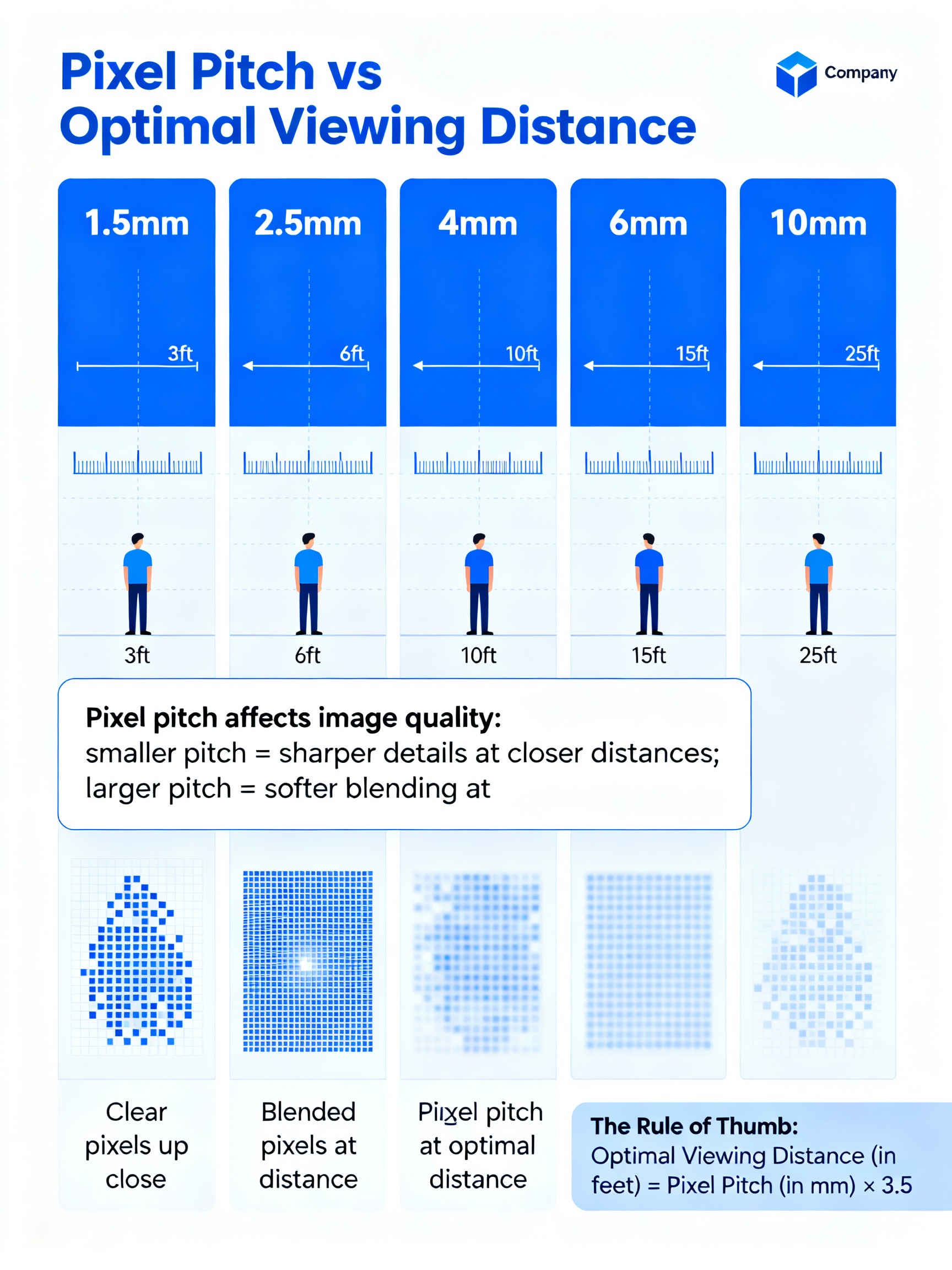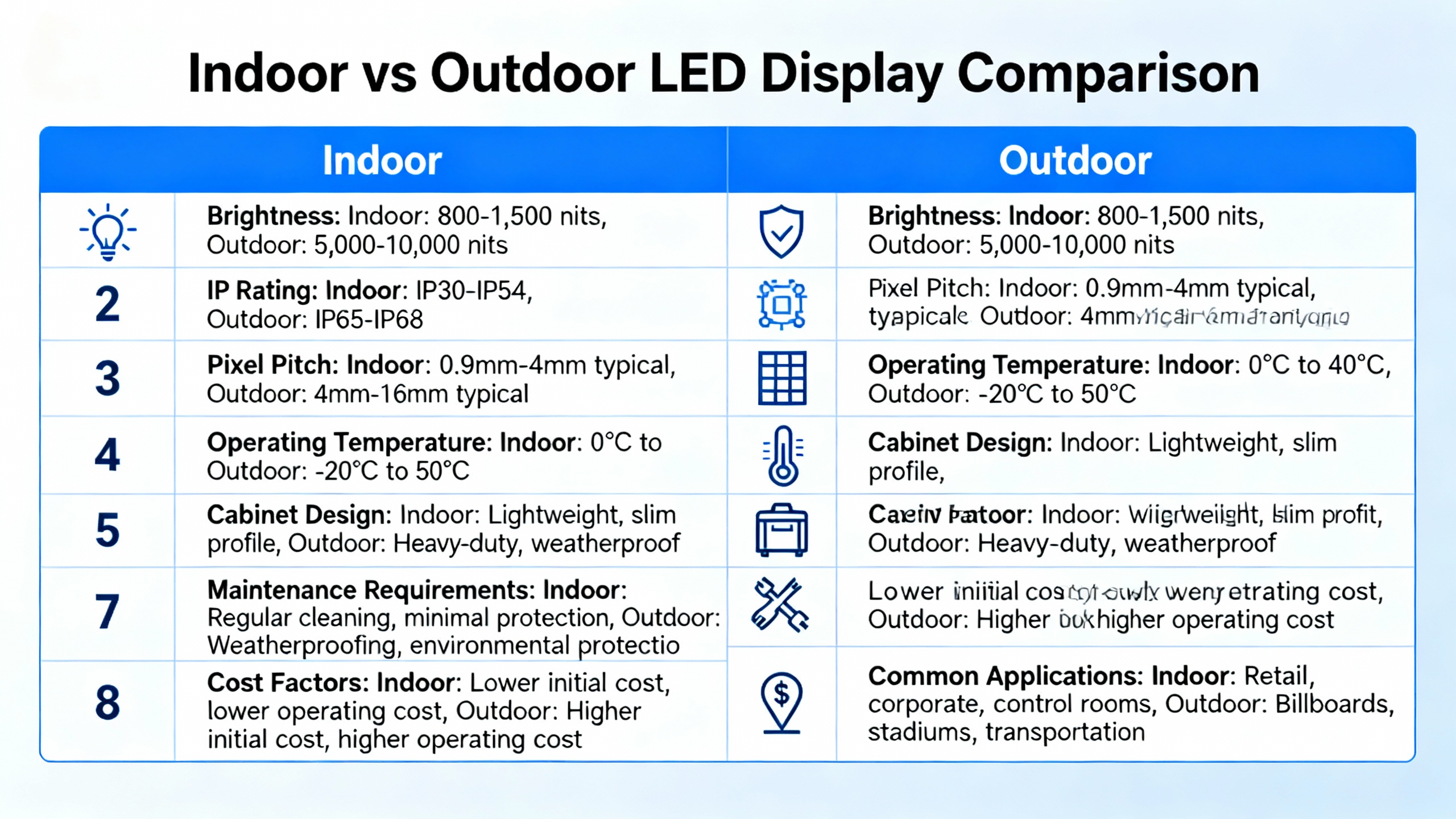1Understanding LED Display Applications
LED displays have revolutionized visual communication across various industries. Before investing in an LED display, it's crucial to understand the specific application requirements for your business needs.
Key Considerations:
- Identify your primary purpose: advertising, information display, entertainment, or brand experience
- Consider the viewing environment: indoor controlled lighting vs. outdoor variable conditions
- Determine required viewing angles based on your audience's typical position
- Assess content requirements: static images, videos, data visualization, or interactive content
2Pixel Pitch & Viewing Distance
Pixel pitch is one of the most critical specifications when selecting an LED display. It directly impacts image quality, optimal viewing distance, and overall cost of your investment.

Key Considerations:
- Smaller pixel pitch (1.5mm-2.5mm) provides higher resolution for close-up viewing
- Larger pixel pitch (4mm-10mm+) is more cost-effective for distant viewing applications
- Consider the minimum viewing distance formula: Viewing Distance (m) = Pixel Pitch (mm) × 1000
- Balance budget constraints with resolution requirements based on typical viewing scenarios
3Indoor vs Outdoor Comparison
Indoor and outdoor LED displays differ significantly in their design, specifications, and durability requirements. Understanding these differences is essential for making an informed purchasing decision.

Key Considerations:
- Brightness requirements: Indoor (800-1,500 nits) vs. Outdoor (5,000-10,000+ nits)
- Weather protection: IP ratings determine water and dust resistance for outdoor displays
- Temperature tolerance: Outdoor displays must operate in extreme weather conditions
- Maintenance accessibility: Factor in service access requirements for your installation location
4Technical Specifications Explained
Understanding the technical specifications of LED displays is crucial for comparing different products and ensuring they meet your specific requirements. Here's a breakdown of the most important specifications to consider.
Key Considerations:
- Brightness (nits): Determines visibility in various lighting conditions
- Refresh rate (Hz): Higher rates reduce flicker and improve video quality
- Color depth (bit): Affects the number of colors displayed and overall image quality
- Power consumption: Calculate operating costs and environmental impact
5Installation & Maintenance Planning
Proper installation and ongoing maintenance are crucial factors that impact the longevity and performance of your LED display investment. Planning for these aspects early in the purchasing process can save significant time and resources.
Key Considerations:
- Structural requirements: Weight-bearing capacity, mounting options, and accessibility
- Electrical infrastructure: Power requirements, backup systems, and surge protection
- Maintenance schedule: Regular cleaning, component replacement, and software updates
- Total cost of ownership: Factor in installation, energy, maintenance, and potential downtime
6How to Select the Right Manufacturer
Choosing a reliable LED display manufacturer is perhaps the most critical decision in your buying journey. The right partner will ensure quality products, responsive support, and long-term reliability.
Key Considerations:
- Industry experience: Look for manufacturers with proven track records in your specific application
- Quality certifications: Verify international standards compliance (UL, CE, RoHS, etc.)
- After-sales support: Evaluate warranty terms, spare parts availability, and technical assistance
- References and case studies: Request examples of similar projects and client testimonials
Ready to Take the Next Step?
Ready to take the next step in your LED display journey? Our team of experts is here to help you find the perfect solution for your specific needs. Schedule a free consultation today to discuss your project requirements and get personalized recommendations.
Request a Free Consultation